In the dynamic world of transportation and logistics, selecting the appropriate flatbed trailer is crucial to ensure efficiency, safety, and cost-effectiveness. At CarMax Trailer, we understand the diverse requirements of various industries, which is why we offer a wide array of flatbed types tailored to meet your specific needs. This guide delves into the different types of flatbed trailers, their unique features, and the advantages they bring to your operations.
Table of Contents
- Standard Flatbed Trailers
- Step Deck Trailers
- Double Drop Trailers
- Lowboy Trailers
- Extendable Flatbed Trailers
- Specialty Flatbed Trailers
- Comparative Analysis of Flatbed Types
- Factors to Consider When Choosing a Flatbed Trailer
- CarMax Trailer: Your Partner in Flatbed Solutions
- Frequently Asked Questions
Standard Flatbed Trailers
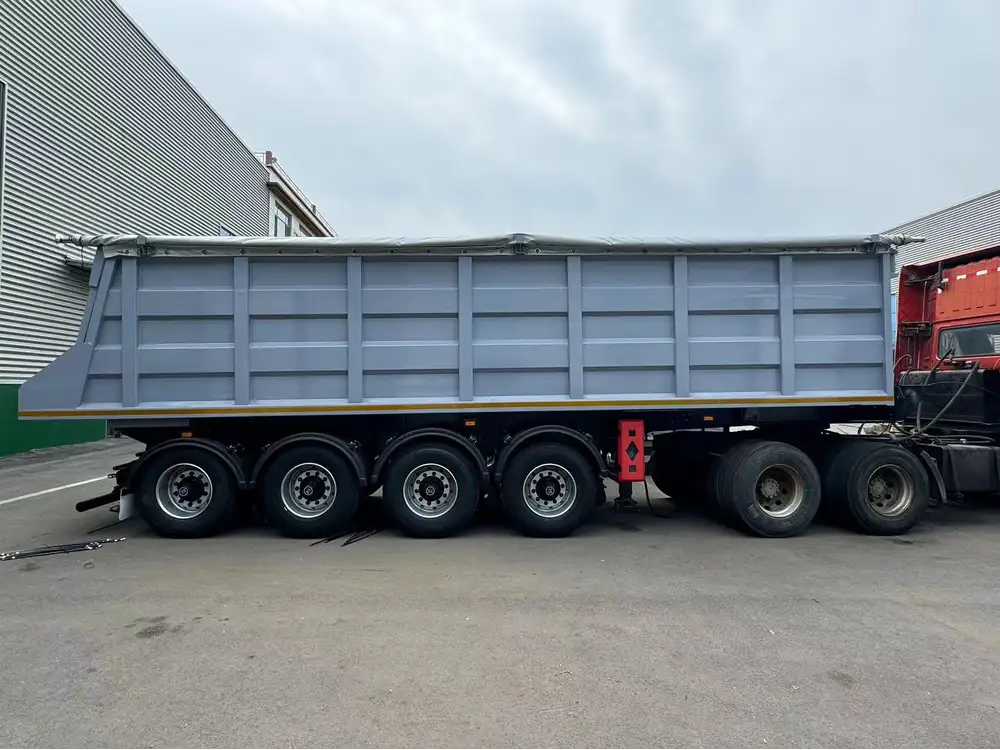
Overview
Standard flatbed trailers are the most common type of trailers used in the transportation industry. They feature a simple design with a flat, open platform that provides flexibility for carrying various types of cargo.
Key Features
- Dimensions: Typically 48 to 53 feet in length.
- Load Capacity: Can handle a wide range of weights, depending on the specific model.
- Accessibility: Easy loading and unloading using forklifts or cranes.
- Versatility: Suitable for transporting machinery, construction materials, and general freight.
Advantages
- Simplicity: Minimal structural components reduce maintenance costs.
- Adaptability: Can be used for multiple applications without significant modifications.
- Cost-Effectiveness: Generally more affordable compared to specialized trailers.

Step Deck Trailers
Overview
Step deck trailers, also known as drop deck trailers, have two distinct deck heights. This design allows for the transportation of taller cargo that wouldn’t fit on a standard flatbed.
Key Features
- Dual Levels: Lower deck height of approximately 42 inches and upper deck height of around 52 inches.
- Increased Height Clearance: Accommodates loads that exceed the height limitations of standard flatbeds.
- Gradient Access: Ramps provide access to both deck levels, enhancing loading flexibility.
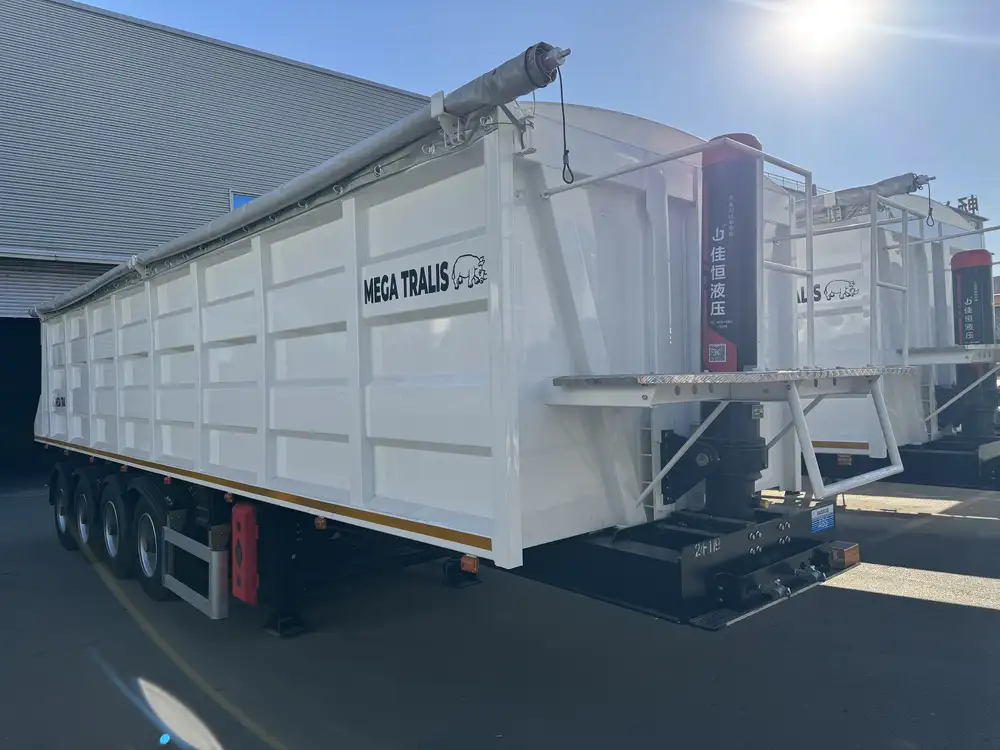
Advantages
- Height Accommodation: Ideal for oversized loads such as construction equipment and industrial machinery.
- Enhanced Stability: Lower center of gravity on the lower deck improves towing stability.
- Regulatory Compliance: Meets height restrictions for interstate transportation.
Double Drop Trailers
Overview
Double drop trailers are specialized flatbeds with two lowered sections that allow for the transportation of exceptionally tall or bulky loads.
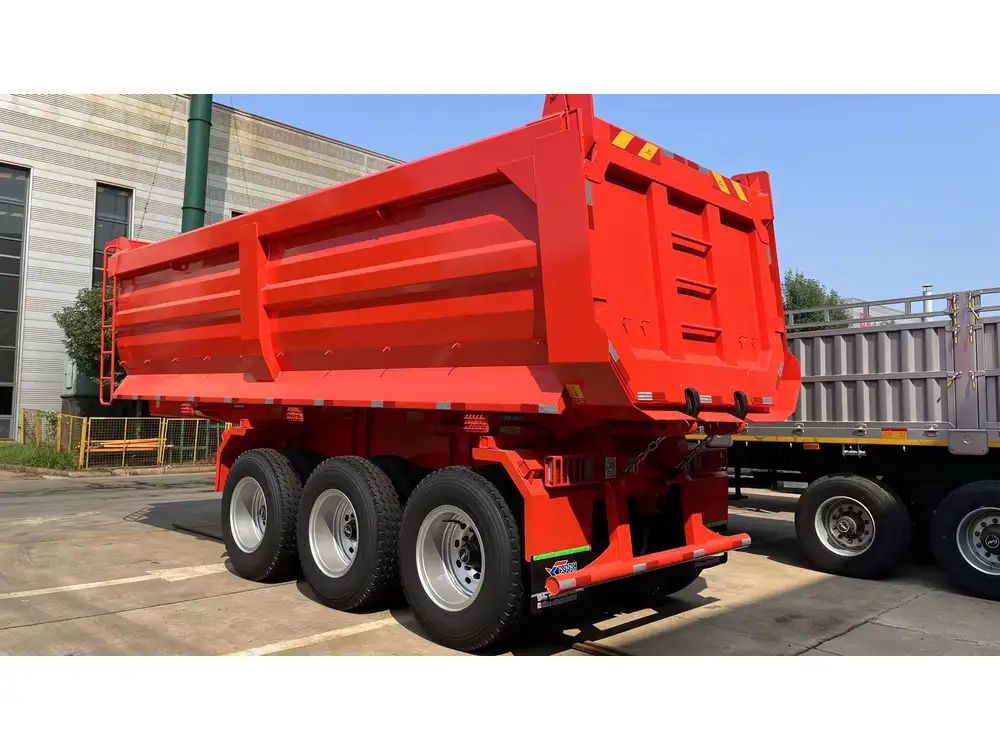
Key Features
- Dual Drop Design: Features two separate drop decks, offering significant height clearance.
- Customizable Deck Heights: Adjustments can be made to accommodate specific load requirements.
- Robust Construction: Built to handle heavy and oversized cargo without compromising structural integrity.
Advantages
- Maximum Height Clearance: Suitable for transporting extremely tall machinery and industrial components.
- Versatility: Can be configured for various load types, providing flexibility for different industries.
- Improved Handling: Lowered sections reduce the center of gravity, enhancing maneuverability.
Lowboy Trailers
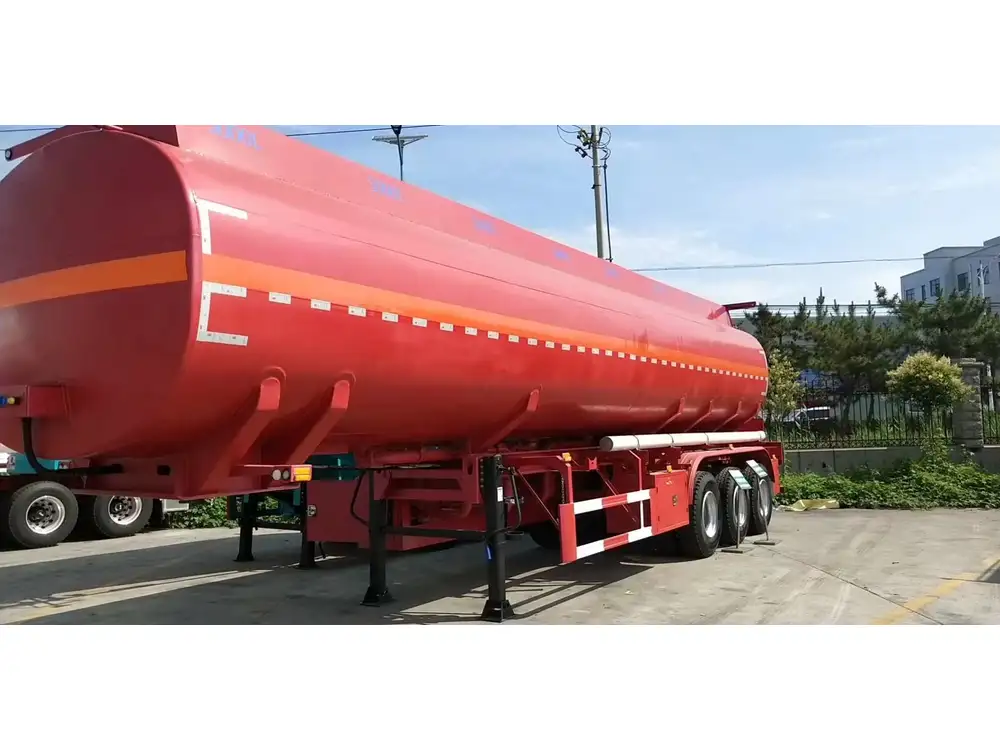
Overview
Lowboy trailers are tailored for hauling heavy and oversized equipment, such as construction machinery, wind turbine components, and large industrial items.
Key Features
- Low Deck Height: Typically between 24 to 32 inches, allowing for the transport of exceptionally heavy loads.
- Extended Length Options: Available in various lengths to accommodate large cargo.
- Sturdy Framework: Reinforced structure to support substantial weight without deformation.
Advantages
- Heavy Load Capacity: Capable of carrying some of the heaviest loads in the industry.
- Enhanced Stability: Lower height minimizes wind resistance and improves towing stability.
- Ease of Loading: Ramps and minimal deck obstructions facilitate smooth loading and unloading processes.

Extendable Flatbed Trailers
Overview
Extendable flatbed trailers offer adjustable deck lengths, making them ideal for transporting oversized or unusually shaped cargo that may not fit on a standard flatbed.
Key Features
- Adjustable Lengths: Decks can be extended or shortened based on cargo size.
- Securing Mechanisms: Equipped with tie-down points and locking systems to secure extended sections.
- Modular Design: Sections can be added or removed to customize trailer length as needed.

Advantages
- Flexibility: Adaptable to a wide range of cargo sizes and shapes, enhancing transportation capabilities.
- Space Optimization: Maximizes cargo space without compromising safety or compliance.
- Cost Efficiency: Reduces the need for multiple trailer types, streamlining fleet management.
Specialty Flatbed Trailers
Overview
Specialty flatbed trailers are designed for specific industries or unique transportation needs, offering tailored features that standard trailers may lack.

Key Features
- Customized Designs: Built to accommodate niche cargo types, such as livestock, hazardous materials, or refrigerated goods.
- Integrated Features: May include additional equipment like tie-down systems, partitions, or climate control.
- Industry Compliance: Meets specific regulatory requirements for specialized cargo.
Advantages
- Targeted Functionality: Provides solutions for unique transportation challenges, ensuring safety and efficiency.
- Enhanced Protection: Specialized features protect cargo from environmental factors and handling stresses.
- Operational Efficiency: Streamlines loading, unloading, and transportation processes for specific industries.
Comparative Analysis of Flatbed Types
| Flatbed Type | Deck Height | Load Capacity | Ideal For | Key Advantage |
|---|---|---|---|---|
| Standard Flatbed | 48-53 inches | Moderate | General freight, machinery | Versatility |
| Step Deck Trailer | Dual: 42 & 52 in | High | Oversized loads, construction | Height accommodation |
| Double Drop Trailer | Dual drops | Very High | Extremely tall or bulky items | Maximum height clearance |
| Lowboy Trailer | 24-32 inches | Extremely High | Heavy machinery, industrial goods | Heavy load capacity |
| Extendable Flatbed | Adjustable | Variable | Oversized or irregularly shaped cargo | Flexibility |
| Specialty Flatbed | Variable | Specialized | Niche industries, unique cargo | Targeted functionality |
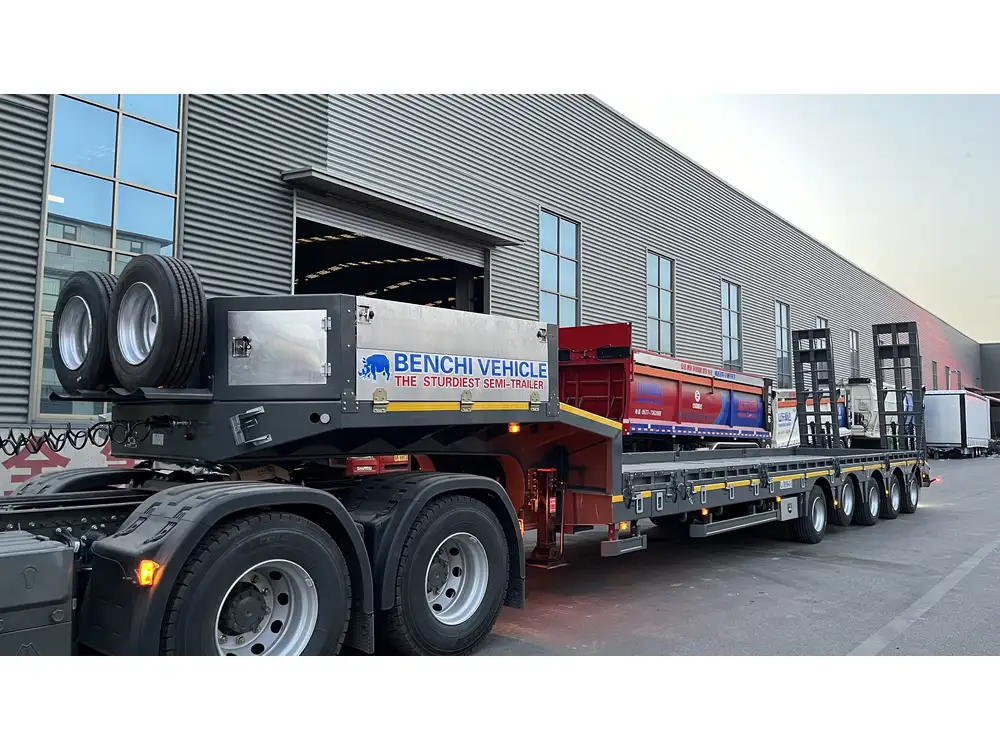
Factors to Consider When Choosing a Flatbed Trailer
Selecting the right flatbed trailer involves evaluating several critical factors to ensure optimal performance and cost-effectiveness. Here’s a step-by-step analysis to guide your decision-making process:
1. Cargo Specifications
- Dimensions: Measure the length, width, and height of your cargo to determine the necessary trailer size and deck height.
- Weight: Assess the total weight to ensure the trailer can handle the load without exceeding its capacity.
- Shape: Consider any irregular shapes that might require extendable or specialty trailers.
2. Transportation Routes
- Regulations: Understand interstate and state-specific regulations regarding trailer dimensions and weight limits.
- Terrain: Evaluate the typical road conditions and gradients to select a trailer with suitable stability and maneuverability features.
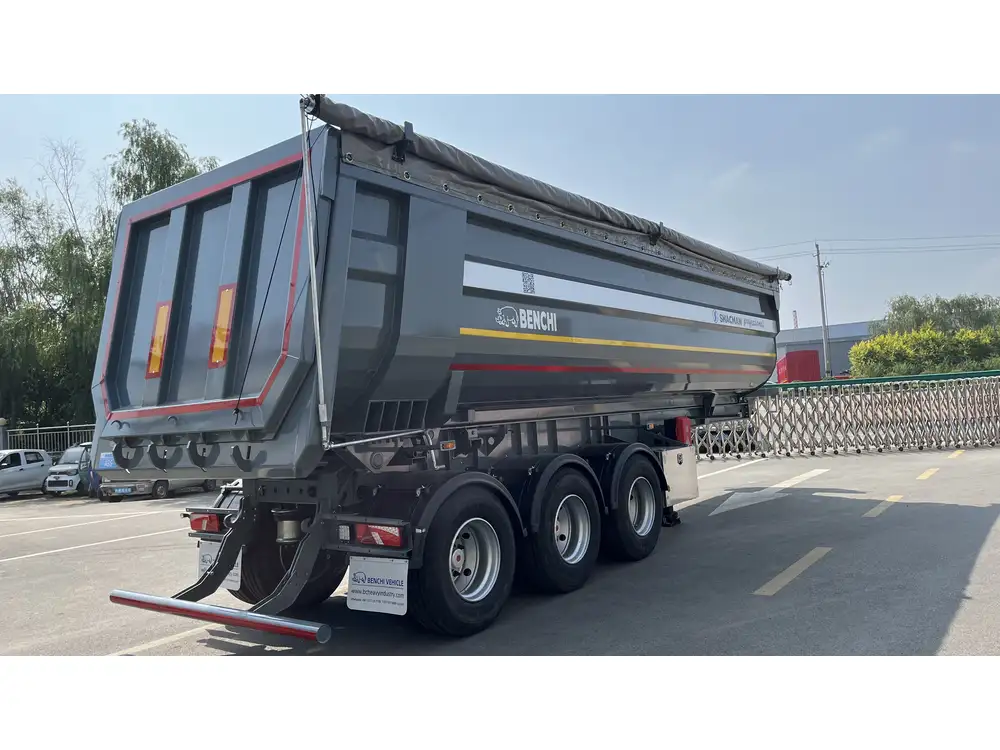
3. Loading and Unloading Requirements
- Accessibility: Determine if your operations require ramps, cranes, or forklifts for efficient loading and unloading.
- Customization: Consider trailers with adjustable decks or specialized securing mechanisms to facilitate easy handling.
4. Frequency of Use
- Operational Intensity: For high-frequency operations, opt for trailers with durable construction and low maintenance needs.
- Versatility: Choose trailers that can handle multiple types of cargo to maximize utilization and reduce fleet complexity.
5. Budget and Cost Efficiency
- Initial Investment: Balance the upfront cost with long-term benefits, selecting trailers that offer the best value for your specific needs.
- Maintenance Costs: Consider the maintenance requirements and associated costs to ensure sustainable operations.
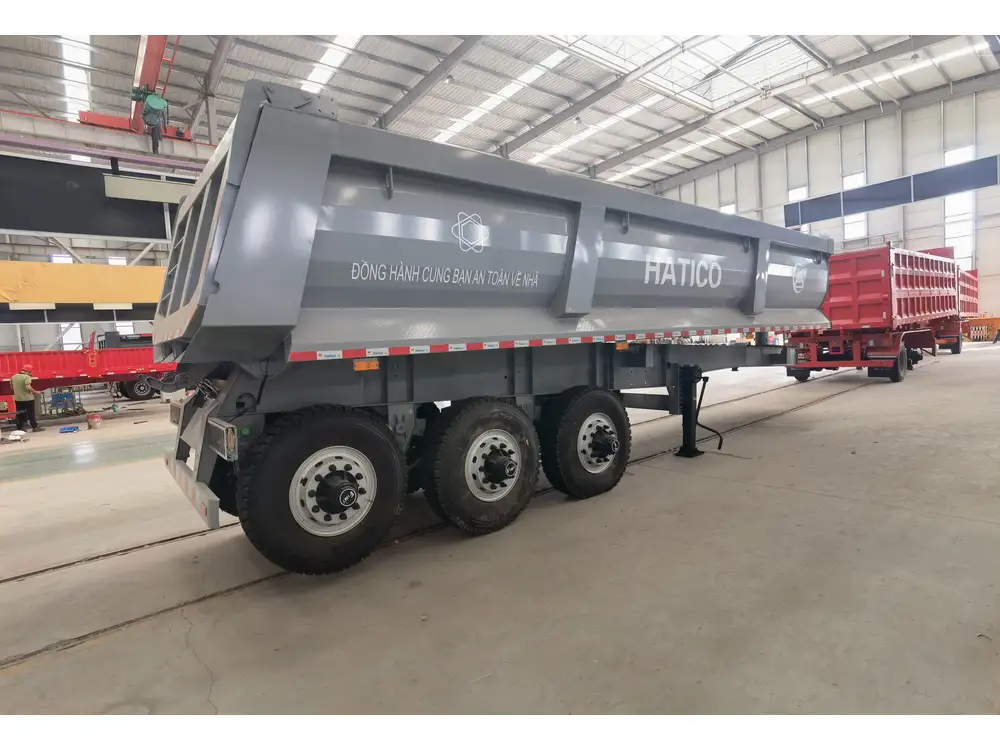
CarMax Trailer: Your Partner in Flatbed Solutions
At CarMax Trailer, we pride ourselves on delivering top-tier flatbed trailers engineered to meet the diverse needs of our clients. Our extensive range of flatbed types ensures that you find the perfect match for your transportation requirements, whether you’re hauling general freight, oversized machinery, or specialized cargo.
Why Choose CarMax Trailer?
- Innovative Design: Our trailers incorporate the latest advancements in design and materials, ensuring durability and performance.
- Customization Options: We offer tailored solutions to match your specific cargo dimensions, weight, and handling needs.
- Quality Assurance: CarMax Trailer adheres to the highest industry standards, guaranteeing reliable and safe transportation.
- Exceptional Support: Our dedicated team provides comprehensive support, from selecting the right trailer to maintenance and servicing.
Our Flatbed Portfolio
- Standard Flatbed Trailers: Versatile and cost-effective, perfect for a wide range of applications.
- Step Deck Trailers: Ideal for transporting taller loads without compromising stability.
- Double Drop Trailers: Designed for maximum height clearance, accommodating even the most oversized cargo.
- Lowboy Trailers: Engineered for heavy-duty hauling, offering unparalleled load capacity and stability.
- Extendable Flatbed Trailers: Flexible solutions that adapt to varying cargo sizes and shapes.
- Specialty Flatbed Trailers: Customized trailers for niche industries and unique transportation challenges.
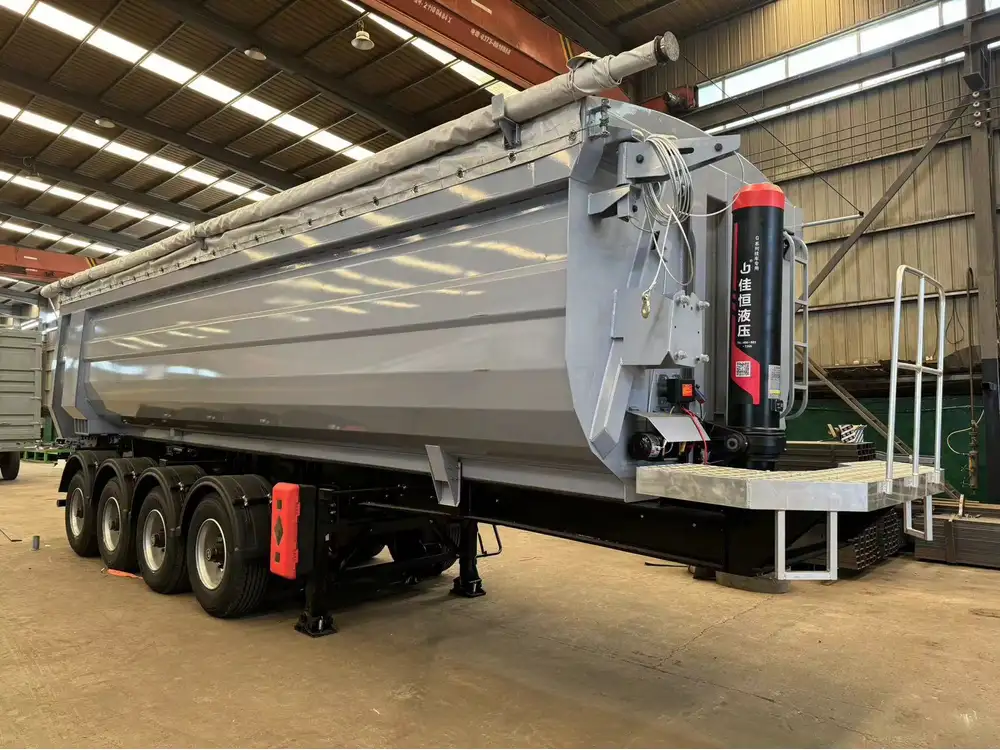
Commitment to Excellence
CarMax Trailer is committed to providing exceptional flatbed solutions that enhance your operational efficiency and ensure the safe transportation of your goods. Our expertise in trailer manufacturing, combined with our customer-centric approach, makes us the trusted partner for businesses across diverse industries.
Frequently Asked Questions
1. What are the main differences between a standard flatbed and a step deck trailer?
Standard flatbed trailers have a single, uniform deck height, typically ranging from 48 to 53 inches, making them suitable for general freight and machinery. In contrast, step deck trailers feature two distinct deck heights—lower and upper—to accommodate taller or oversized loads that exceed the height limitations of standard flatbeds.
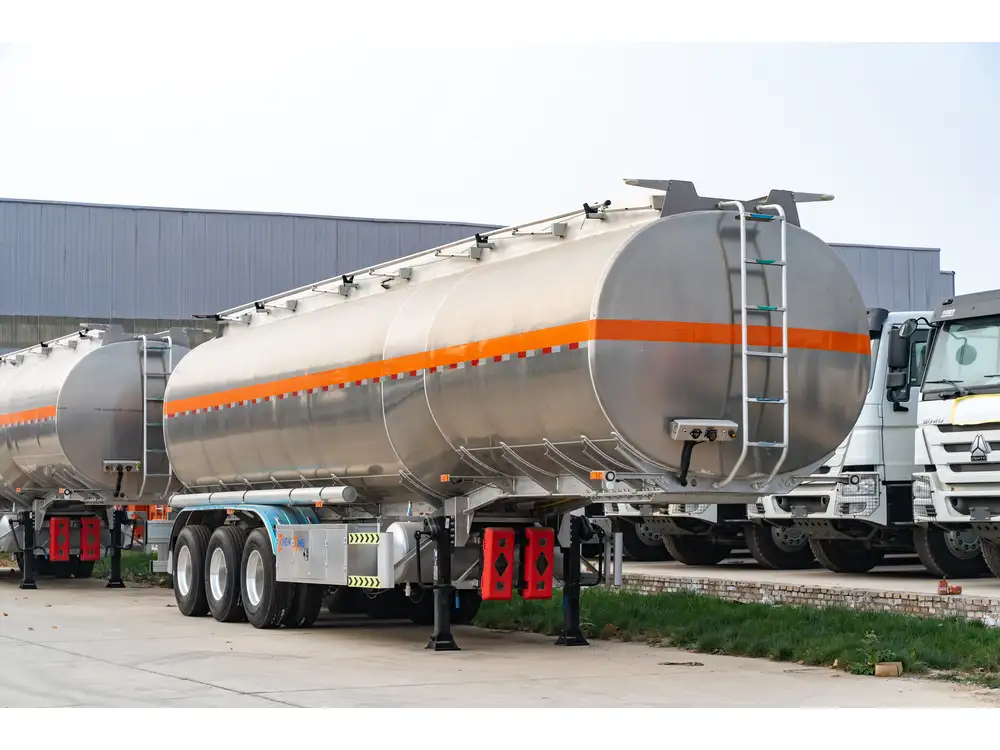
2. How do lowboy trailers enhance the transportation of heavy equipment?
Lowboy trailers have a significantly lower deck height, usually between 24 to 32 inches, which lowers the center of gravity of the load. This design improves towing stability and allows for the transport of exceptionally heavy machinery and oversized components without exceeding height restrictions set by transportation authorities.
3. Can extendable flatbed trailers be adjusted on-the-go, or do they require prior setup?
Extendable flatbed trailers are designed to be adjusted before loading. The process involves extending or retracting the trailer’s deck sections to match the dimensions of the cargo. This flexibility allows for the efficient transportation of oversized or irregularly shaped loads by customizing the trailer length as needed.
4. What maintenance practices are essential for ensuring the longevity of flatbed trailers?
Regular maintenance is crucial for flatbed trailer longevity. Essential practices include routine inspections of the chassis, axles, and braking systems; ensuring that tires are properly inflated and free from wear; maintaining the integrity of tie-down points and securing mechanisms; and promptly addressing any signs of rust or structural damage to prevent further deterioration.
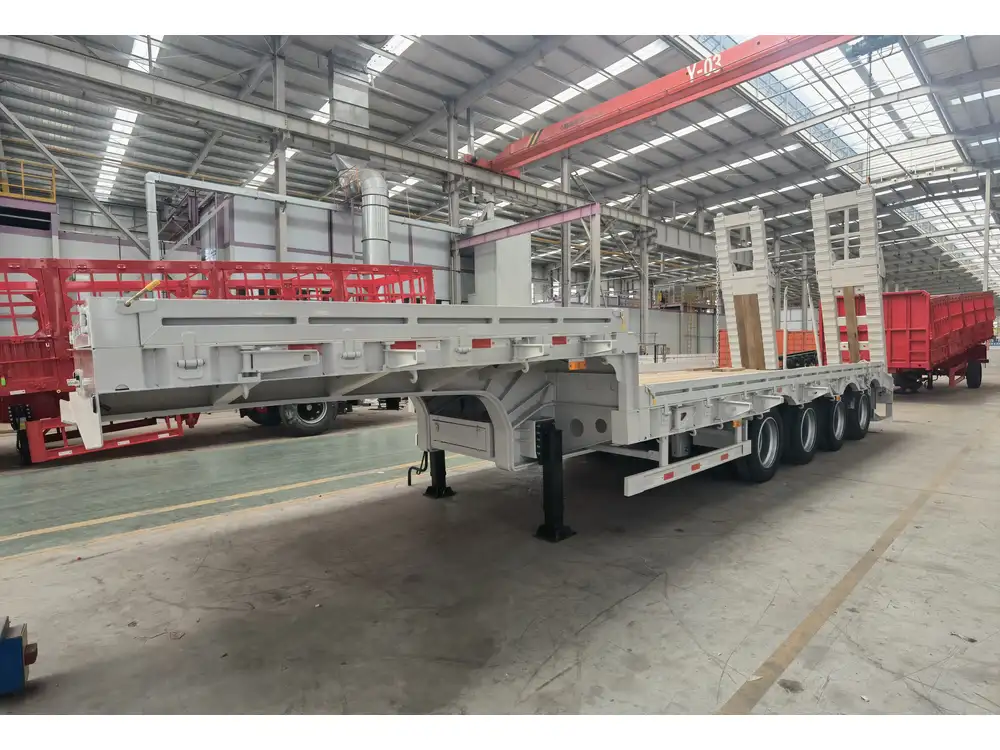
5. How does CarMax Trailer ensure compliance with transportation regulations?
CarMax Trailer ensures compliance by adhering to all federal and state regulations regarding trailer dimensions, weight limits, and safety standards. Our design and manufacturing processes incorporate these regulations, and we continuously update our knowledge and practices to align with any changes in transportation laws, ensuring that our trailers provide safe and legal transportation solutions.
#



